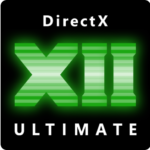What is more funny? People used to 'care' about the cost of a mainstream card. Used to be $200-$250 range. Then it was a firm $250. Last gen it was okay to consider a $400 card mainstream. Now? $500. My God, how do you people look yourselves in the mirror when both, BOTH, companies have convinced you to smile at a shit sandwich, eat it, and ask for more? I am the poor one in my circle of friends and I had to swallow a bitter pill to buy a 5600 XT for $300 because there was nothing, NOTHING cheaper this generation. Before that it was an RX470 4GB for $180 and before that hand-me-down 780ti and 680ti video cards. In reality, most people get what they can afford and set principles on what is acceptable cost. For me? Anything at or exceeding my car's monthly payment can screw right off. I like my car. I love my house. To buy something and say, eh I'll cover the bill next month is an idiot pretending to keep up with the Jones'. That is what I feel Ray Tracing and DLSS are; fancy feature sets to justify buying a new generation of video card. No game I play currently has either of those features. And at 28 games by end of 2021, do I really plan to play any of them.? Not really.
As for Nvidia v AMD performance and cock measuring about disposable income, I got two hetero-lifemate-friends who both work as engineers and single. Been friends over 28 years. They have disposable income for days enough to buy stock and bitcoiin on a whim. When it comes to flexing on what their PC specs / car / fashion is and I quote, "The fuck do I care what other people think about what I bought? I wanted it, and I am happy with it."
When you flex with explanations on what your awesome history is over others in a conversation, you lost.
When you flex pictures of what you got and others don't, you lost.
When you got to reach for the heavens and pluck the ambrosia of an explanation to justify your place in the world, you lost.
So, here I am questioning my sanity for bothering to read 6 pages of this stuff. The cognitive dissonance and logical fallacy started this thread, and just went to the races in continuing to exist there. The dog I have in this game? The time I spent reading all the replies. phew. Gonna go earn a paycheck now. PEACE.










